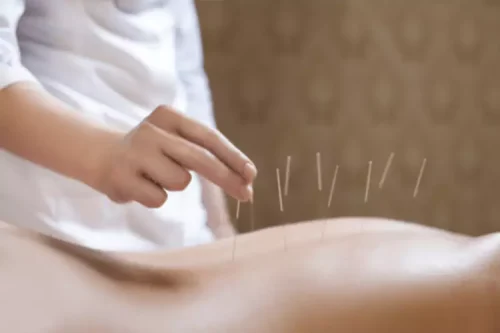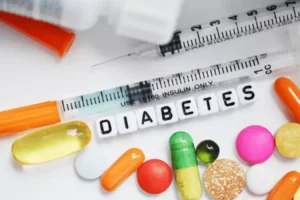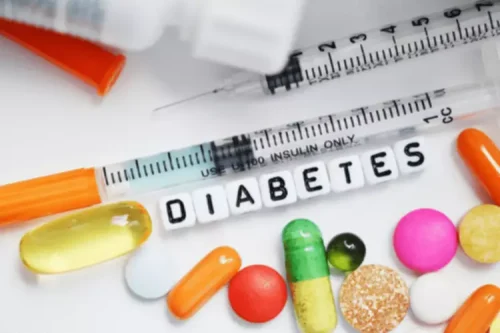Public Offering Price POP: Meaning, Process, Researching Prices
July 24, 20236 Key Difference Between Coin And Token With Examples
July 26, 2023
They work synergistically and are important in regulating the overall level of excitation, as well as in =https://ecosoberhouse.com/ learning and in memory (Davis and Myers 2002). These processes are important for memory consolidation, fear learning, and involuntary activation of reward circuits in response to cues and in craving (Kalivas and O’Brien 2007). Several brain regions are thought to be particularly relevant for these processes and include the hippocampus, the site of memory formation, the amygdala and the prefrontal cortex. Circuits between these functions have been hypothesized to be important in the maintenance of addictive disorders (Koob and Volkow 2016) and PTSD (Sripada et al. 2012). The findings suggest that these interventions had a small positive effect on PTSD outcomes and didn’t significantly affect SUD outcomes. CPTSD is a subtype of PTSD that develops in response to prolonged, repeated traumatic experiences, typically lasting months or years.
Addiction Treatment
- However, the hospital-based patients were likely to have different physical health profiles than patients recruited from the rehabilitation centers.
- Studies have shown that a traumatic stimulus triggers people with PTSD and an alcohol use disorder to crave alcohol.
- Second, although treatments for PTSD and SUD have been disseminated systemwide within the VA, there is a dearth of literature about the effectiveness of these treatments for those in this population who have both conditions.
- However, some research has examined the prevention of PTSD or AUD separately in this population, which could inform the prevention of comorbid PTSD and AUD.
- This programme aims to help countries increase services for people with mental, neurological and substance use disorders in non-specialized settings in LMICs and is being implemented in more than 100 countries.
- Individuals with PTSD have high levels of cerebral spinal fluid corticotropin releasing hormone (CRF) and norepinephrine, which has also been shown to mediate the relationship between stress and substance seeking behavior 68, 69.
The first study by Stein and colleagues (2017) reports on alcohol misuse and AUD prior alcohol rehab to enlistment in the Army, and highlights the strong association between prior AUD and subsequent development of PTSD among newly enlisted soldiers. The second study is a laboratory study (Ralevski et al., 2016) among military veterans with AUD and PTSD. It is among the first studies to examine the effects of trauma cues and stress (non-trauma) cues on alcohol craving, mood, physiological and neuroendocrine responses, and demonstrates the powerful effects of trauma cues on alcohol craving and consumption.

Behavioral Treatments for Comorbid AUD and PTSD
- Assessments that followed have used the foundational structure and question format of the DIS to interview participants.
- Moreover, there is a dearth of knowledge on the relationships between PTSD and other psychiatric conditions in non-Western settings.
- The titration was accomplished in 2 weeks, so a 6-week trial should be adequate to evaluate medication response.
- “VA is on the cutting edge of clinical research for veteran health, including in the investigation of psychedelics for mental health,” Under Secretary for Health Dr. Shereef Elnahal said in a news release.
A combination of therapy, counseling, and medication can be effective in helping individuals manage these co-occurring disorders and improve their overall well-being. Research has shown that individuals with PTSD are more likely to have alcohol use disorder (AUD) compared to those without PTSD. In fact, studies have found that up to one-third of people with PTSD also struggle with AUD. These statistics highlight the need for comprehensive treatment strategies for individuals dealing with both conditions. There is a significant correlation between PTSD and substance abuse, particularly alcohol use. Many people with PTSD turn to alcohol as a form of self-medication, attempting to numb the emotional pain and distress caused by their traumatic experiences.
- Prazosin has been explored in the treatment of SUD and PTSD separately, but only recently in the treatment of co-occurring SUD and PTSD.
- Patients satisfying either alcohol abuse and/or alcohol dependence criteria are together defined as having an alcohol use disorder.
- There were connections between exposure to specific traumas (most commonly sexual and physical abuse) and increased risk of early alcohol initiation and subsequent development of AUD, although these connections were only observed among EA women.
Causes and Symptoms of PTSD
- Recommended pharmacotherapies include acamprosate, disulfiram, naltrexone, and topiramate.
- This study examined how alcohol use disorder (AUD) patients with post-traumatic stress disorder (PTSD) differed from those without PTSD in terms of demography, drinking patterns and C-reactive protein, inflammatory cytokines, tryptophan metabolism parameters, and brain-derived neurotrophic factor (BDNF).
They can help people ptsd and alcohol abuse manage difficult situations and address the events, people or places that trigger their traumatic memories. Around 70% of people globally will experience a potentially traumatic event during their lifetime (1), But only a minority (5.6%) will go on to develop PTSD (2). An estimated 3.9% of the world population has experienced PTSD at some point in their lives (2). The likelihood of developing PTSD varies depending on the type of traumatic event experienced. For example, rates of PTSD are more than three times (15.3%) higher among people exposed to violent conflict or war (3). Co-occurring AUD and PTSD is a public health concern, especially among active military service members and veterans, as well as victims of violence and sexual assault.

The rehabilitation centers were comparable in terms of user fees, and treatment modality. However, the hospital-based patients were likely to have different physical health profiles than patients recruited from the rehabilitation centers. The participant recruitment procedure and the participant characteristics from the original study have been published previously 38, 40.

